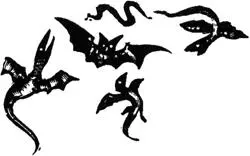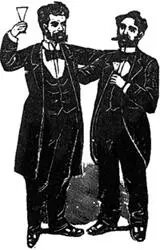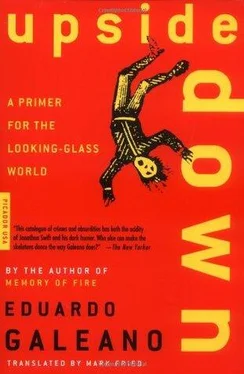Bertolt Brecht used to say that robbing a bank is a crime but the greater crime is to found one. After the war, Switzerland became the cave of Ali Baba for the world’s dictators, crooked politicians, tax-evading acrobats, and traffickers in drugs and arms. Under the resplendent sidewalks of the Banhofstrasse in Zurich and the Corraterie in Geneva lie the fruits of looting and fraud, transformed into stacks of gold bars and mountains of bills.
Besieged by scandals and lawsuits, numbered accounts are not what they used to be, but for better or worse the engine of national prosperity hums along. Money still has the right to wear a costume and a mask in this never-ending carnival, and referendums have proved that the majority of the population finds nothing wrong with that.
Though the money arrives as dirty as can be and the washings are incredibly complicated, this launderette leaves it spotless. In the eighties, when Ronald Reagan presided over the United States, Switzerland was the center of operations for the many-faceted manipulations of Oliver North. As Swiss journalist Jean Ziegler discovered, U.S. arms went to Iran, an enemy country, which paid for them in part with morphine and heroin. From Switzerland the drugs were sold and in Switzerland the money was deposited that later financed the mercenaries who bombed cooperatives and schools in Nicaragua. Back then, Reagan liked to compare those mercenaries to the U.S. Founding Fathers.
Whether temples with high marble columns or discreet chapels, Swiss sanctuaries dodge questions and proffer mystery. Ferdinand Marcos, despot of the Philippines, kept between $1 billion and $1.5 billion in forty Swiss banks. The Philippine consul in Zurich was a director of Crédit Suisse. At the beginning of 1998, twelve years after Marcos’s fall and after many suits and countersuits, the Federal Tribunal ordered $570 million returned to the Philippine government. It wasn’t everything, but it was something and an exception to the rule: normally, stolen money disappears without a trace. Swiss surgeons give it a new face and name, fabricating a new legal life and a fake identity for it. Of the booty looted by the Somoza dynasty, vampires of Nicaragua, nothing at all turned up. Practically nothing was found, and nothing at all was returned, of what the Duvalier dynasty stole from Haiti. Mobutu Sese Seko, who squeezed the last drop out of Congo, always visited his bankers in Geneva in a fleet of armored Mercedes. Mobutu had between $4 billion and $5 billion: only $6 million could be found after his dictatorship fell. The dictator of Mali, Moussa Traoré, had a little over $1 billion; Swiss bankers returned $4 million.

The money of the Argentine officers who sacrificed themselves for the fatherland by waging terror from 1976 on ended up in Switzerland. Twenty-two years later, a lawsuit revealed the tip of that iceberg. How many millions vanished into the mist that shrouds their phantom accounts? In the nineties, the Salinas family stripped Mexico clean. Raúl Salinas, the president’s brother, was called “Mr. Ten Percent” in recognition of the commissions he pocketed from privatizing public services and protecting the drug mafia. The press reported that his river of dollars ended up in Citibank, the Union des Banques Suisses, the Société de Banque Suisse, and other affiliates of money’s Red Cross. How much will be recovered? Money plunges into the magic waters of Lake Geneva and becomes invisible.
There are those who praise Uruguay by calling it the “Switzerland of America.” We Uruguayans aren’t too sure about that tribute. Does it honor our democratic traditions or our own secret banking laws? Since numbered accounts came in a few years ago, Uruguay has become the Southern Cone’s cashier, a huge bank with an ocean view.


DIVINE POWER
On the last night of 1970, three of God’s bankers met in a hotel in Nassau. Caressed by tropical breezes, surrounded by postcard scenery, Roberto Calvi, Michele Sindona, and Paul Marcinkus celebrated the birth of the new year by raising their glasses in a prayer for the annihilation of Marxism. Twelve years later, they annihilated the Banco Ambrosiano.
The Banco Ambrosiano wasn’t Marxist. Known as “ la banca dei preti, ” the priests’ bank, Ambrosiano would not accept stockholders who had not been baptized. It wasn’t the only banking institution linked to the Church. Back in 1605, Pope Paul V had founded the Bank of the Holy Ghost, which no longer performed financial miracles for divine benefit, as it had been taken over by the Italian state, but the Vatican had, and continues to have, its own official bank, piously called the Institute for Religious Works. In any case, Ambrosiano was very important, the second-largest private bank in Italy, and the Financial Times called its collapse the gravest crisis in the history of Western banking. In this colossal swindle, over a billion dollars went missing and the Vatican itself, one of the bank’s primary stockholders and greatest beneficiaries of its loans, was directly implicated.
Many camels went through the eye of that needle. Ambrosiano wove a global spider’s web for laundering money from drug trafficking and arms dealing, working hand in hand with the Sicilian and U.S. mafias and with drug networks in Turkey and Colombia. The Cosa Nostra used it to evade taxes on the profits of its smuggling and kidnapping operations, and it sent a shower of dollars to Polish unions fighting against the Communist regime. The bank also generously supplied the Contras in Nicaragua and the P-2 Lodge in Italy, Masons who allied with their traditional enemy the Church to fight the red threat. The capos of the P-2 received a hundred million dollars from Ambrosiano, which contributed to their family prosperity and helped them set up a parallel government for carrying out terrorist attacks meant to punish the Italian left and sow panic among the population.
For Religion Class
When I went to Rome for the first time I no longer believed in God, and for me earth was the only heaven and the only hell. But my memory of God the father from my childhood wasn’t a bad one, and deep inside I kept a special place for God the son, the rebel of Galilee who defied the imperial city where my Alitalia flight was then landing. Of the Holy Ghost, I confess, not much stayed with me, just a vague recollection of a white dove that dives down with outspread wings and impregnates virgins.
As soon as I walked into the Rome airport a huge sign loomed before my eyes: BANK OF THE HOLY GHOST.
I was young and it made quite an impression on me that this was what the Holy Ghost was up to.
The bank was cleaned out over a number of years, its assets flowing into a number of open financial mouths in Switzerland, the Bahamas, Panama, and other fiscal paradises. Heads of government, ministers, cardinals, bankers, captains of industry, and top bureaucrats were all accomplices in the looting organized by Calvi, Sindona, and Marcinkus. Calvi, who administered monies for the Holy See and presided over Ambrosiano, was famous for his icy smile and his accounting pirouettes. Sindona, king of the Italian stock exchange, trusted by the Vatican to handle its investments in real estate and finance, also served as a bag man for the U.S. embassy’s donations to right-wing parties. He owned banks, factories, and hotels in several countries and was even the owner of the Watergate building in Washington, which earned a spot in the history books thanks to the curiosity of Richard Nixon. Archbishop Marcinkus, who presided over the Institute for Religious Works, was born in Chicago, in the same neighborhood as Al Capone. A muscular man always chomping on a cigar, he had been the pope’s bodyguard before he became his business manager.
Читать дальше














